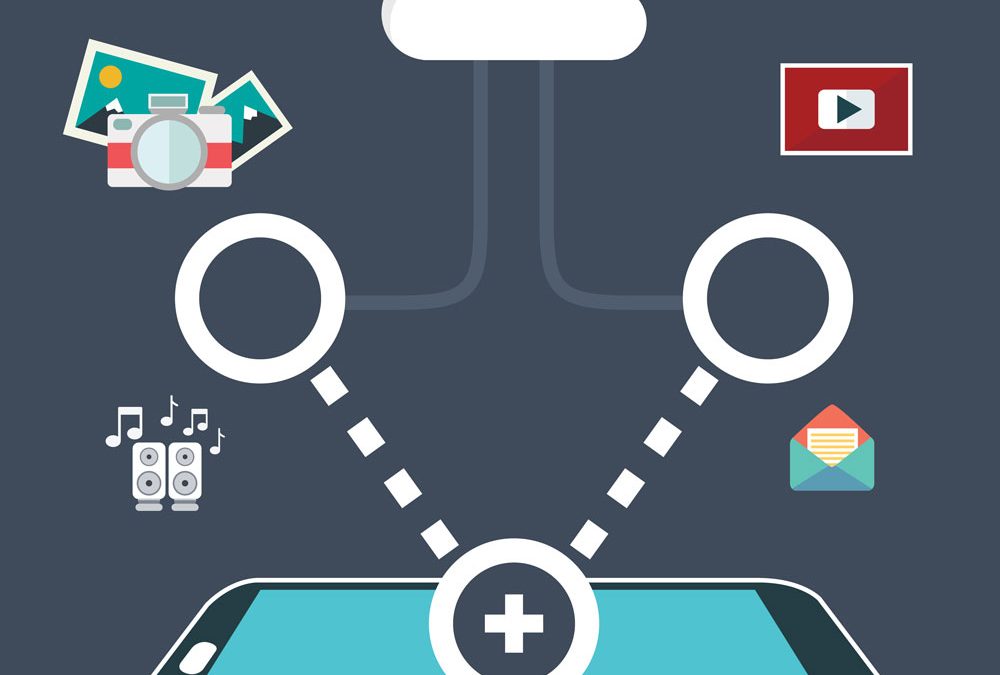
Aug 7, 2018 | SMB Technology, SMB Technology, SMB Technology, SMB Technology, Technology News
Cloud computing has become more and more popular over the last several years, with that popularity continuing into 2018 and 2019. According to a report by the International Data Corporation (IDC), public cloud services will grow from nearly $70b to more than $141b in 2019. SaaS is likely to be the key consumption model for Cloud Services, and Telecommunications is expected to be the fastest-growing vertical industry. According to COMPTIA, half of all small to medium-sized businesses report having 31% to 60% of their IT functions in the cloud environment. What is cloud computing, and what are its benefits? Read on to learn more about this technology. More Access for Predictable Cost Cloud computing is an Internet-based model of computing, on a pay-per-use basis, with benefits to organizations large and small. Using the Cloud saves costs, partly by changing a capital expense to an operating expense. Businesses no longer need to replace aging infrastructure, but can move their data, systems and applications to a subscription-based model like Infrastructure as a Service (IaaS) or Software as a Service (SaaS). Businesses, at least in the public cloud environment, can share common system resources (hardware, software, operating system and application database). Usage monitoring and a utility billing model keeps the costs predictable. Cloud computing increases employee productivity by giving the business a common interface, allowing employees to work outside the office, and outside traditional office hours. Another function of the cloud is data backup, allowing the company to have data offsite for easier backup and recovery in case of a disaster. What To Consider Before Moving to The Cloud With all these...

Jul 17, 2018 | SMB Technology, SMB Technology, SMB Technology, SMB Technology, Technology News
With more data than ever being collected, analyzed, managed, and stored, keeping the data as well as the business’s systems secure is a priority leading into 2018, and beyond. According to statistics, more than 50% of cyber breaches are due to human rather than technical error. Read on to learn more about creating a culture of cybersecurity by educating and training your staff. Training Employees to Create a Secure Culture According to a CompTIA report, creating a culture of cybersecurity starts with management. Preventing data breaches means more than simply meeting legal requirements; cybersecurity should be part of a bigger risk-management strategy. Another key piece is educating employees on their role in creating a secure culture. Educating and training employees should occur on more than one front. First, employees need to recognize threats as they occur, threats such as phishing schemes and ransomware, attacks designed to steal passwords and hold data hostage. While cloud computing has ushered in wonderful capabilities–such as the ability to work anywhere at any time– it also brings security risks by changing the business’s security perimeter. Employees working outside the office should be aware of the possible dangers of unintended eavesdroppers and unsecured mobile “hotspots.” Additionally, management should educate their staff about establishing and maintaining strong passwords that can’t be stolen. Establish Procedures for Responding to Data Breaches Another aspect of establishing a culture of cybersecurity is training employees to respond to a data breach if one occurs. Establish clear policies of reporting malware, phising and other security hazards, and make sure employees aren’t afraid to report problems. Also, be clear with employees about processes...

Jul 3, 2018 | SMB Technology, SMB Technology, SMB Technology, SMB Technology, Technology News
With technology growing by leaps and bounds, and regulations assigned to protect the data generated by this technology, you need a business continuity and disaster recovery plan in place to determine how that data is collected, protected, analyzed and stored. Read on to find out how to protect your company from data loss and its consequences. Why You Should Care About Data Protecting Your Data According to COMPTIA, data protection will be a key trend in 2018 and beyond. Businesses will continue to generate large amounts of data; for some companies, regulations such as PCI, GDPR and HIPAA require protection of data and plans for business continuity in the face of potential data loss. Even without the need for compliance to regulations, businesses need access to their data even in the event of a natural disaster or a cyberattack. How Much Downtime Can you Afford? The average cost of downtime is $5,600 per minute. Not only that, but if your business is inaccessible during a flood, fire or other disaster, or simply a power outage, customers can lose confidence in the product or service you provide. Even more serious is the prospect of confidential data being lost or exposed. Having a plan in place can make the difference in whether your business stays in business. What to Include in Your Plan How much data can you afford to lose, and how long can you be without it? The best plan provides for storage and restoration of data during and after a disaster. How long can your systems be down before it affects profitability? How will you restore data that...

Jun 18, 2018 | SMB Technology, SMB Technology, SMB Technology, SMB Technology, Technology News
In little more than a decade, cloud computing has changed from a cutting-edge technology to a well-established part of the IT function in many businesses. Cloud computing offers the benefits of cost savings and access to new technology. Read on about what cloud computing can do for your business, as well as what to consider before migrating to the cloud. The Growth of Cloud Computing According to a report published by CompTIA in 2018, 81% of companies say that operating in the cloud has had at least a moderate, if not outstanding, effect on their automation efforts. Even though the hype over cloud computing has decreased, this mode of computing is still a key feature of IT planning in most companies. The IDC expects that cloud spending will reach $162 billion dollars by 2020. And more and more IT spending in companies is cloud-based. The Benefits of Cloud Computing A key benefit of Cloud Computing is providing new tools companies can use to grow their business. One such tool is desktop as a service (DaaS), a utility often included in Cloud services. Other commonly used applications are VoIP, Call Center and Cloud backup of data. Since companies can move their data and more routine operations like VoIP, call center and data backup to the cloud, they can focus on strategies for long-term growth and explore new prospects for business growth. For IT workers, the prospect of job loss lessens, since they can learn new skills and expand their roles. Finally, migrating to the cloud can help reduce costs by changing capital expense—perhaps in the form of aging infrastructure—to operating...

Jun 12, 2018 | SMB Technology, SMB Technology, SMB Technology, SMB Technology, Technology News
Data security needs to operate on more than one front. Not only does your network need to keep data secure, it needs to respond to threats both inside and outside the business. There are numerous protections, including current anti-malware and anti-virus software and operating system patches, to keep your network stable and secure. Read on to find out how operating system patch policy can be part of your data-protection plan. The Role of Operating System Patches Operating system patches are updates that help maintain the stability and security of your network. These updates come out on a regular basis and are needed to keep systems working. Typically, operating system patches are frequently available, although older operating systems past end of life may no longer have patches. Windows 7 and Windows server 2008 are next up for end of life in January of 2020. Some are vital to your mission-critical systems and must be accessed immediately, while others may pertain to less-vulnerable systems, and can be postponed. How a Service-Level Agreement Can Help Protect Your Data Instead of trying to choose which operating system patches need to be installed now, let your managed service provider take over. Draw up a service level agreement that specifies what services the managed service provider can take care of, including backup, data recovery, network security updates, and operating system patches. Keeping your systems—including operating system patches—current helps protect your data and prevent downtime. The MSP can detect and resolve many problems remotely, outside of business hours. Problems can be solved before they result in downtime for your business, and a reputable IT business can...

May 16, 2018 | SMB Technology, SMB Technology, SMB Technology, SMB Technology, Technology News
As Technology grows, so does the complexity of threats to your network–hackers infiltrating your network and stealing passwords, infection of your network with malware, phishing schemes, and even cybercriminals masquerading as your own IT staff, all these pose risks to your network’s security. Your network is only as strong as its weakest link. And sometimes, that weak link is your human capital. According to a CompTIA white paper, network security was a key issue on the minds of business owners coming into 2018. Cybercrime damages are expected to reach $6 trillion annually in the next few years. Keeping malware and antivirus definitions up to date, and having OS patches ready is necessary, of course. And so is data encryption. But don’t overlook the human element. Human error is implicated in more than half of all data breaches, more than technological error. The education and training of employees plays an important part in keeping your network secure. A Culture of Security As important as technology tools are, the human element is even more so. When a data breach occurs, human error is at fault more than 50% of the time. So what can you do to train your employees? Part of the solution starts at the top. Managers need to adopt a strong security orientation for the entire company, educating all employees in how to recognize potential threats–phishing schemes, for example–and to report these threats. They need to keep up with the dangers related to social media and unsecured “hotspots.” Also, they need to be told about the establishment and management of strong passwords and data encryption. Should a data...







